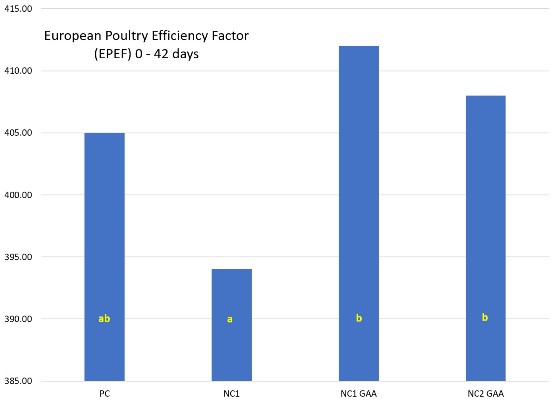The prices of raw material prices have increased significantly and have a direct impact on feed costs
In the Middle East Africa region, maize has increased on an average by 49%, soya oil by 76%, and soybean meal by 24%.
As is widely known, feed accounts for up to 70% of the cost of production of animal protein, so in turn meat, milk and eggs become more expensive.
In this situation, one needs to look at all opportunities to reduce these impacts. The first place to look at should be energy because this is always the nutrient with the highest cost impact in formulations. The table below shows a typical broiler grower diet and the relative impact on cost per tonne of four different nutrients increased by 1%.
|
|
Level in Feed |
Cost Impact of 1% Increase (US$) |
|
AME kcal/kg |
3,050 |
6.56 |
|
SID Lysine % |
1.06 |
0.04 |
|
SID M+C % |
0.78 |
0.15 |
|
Available P % |
0.40 |
0.05 |
What exactly is energy?
Our livestock actually obtain energy from a variety of different compounds in the feed, oils and fats, carbohydrates such as starch and sugar, and proteins. All of these different classes of compounds are ultimately converted to the energy ‘currency’ ATP (adenosine triphosphate) that is used by cells to do the work of growing and producing the products we require, like meat, eggs and milk.
The amount of energy that animals can derive from the compounds above varies, but the general trend is:
Fats and Oils > Carbohydrates > Proteins
This process of conversion takes place in the mitochondria, organelles in every cell that serve as ‘powerhouses’. Each of the above compounds enters this process together with oxygen. The result is carbon dioxide, water, and ATP. Part of this energy conversion process relies on creatine and this compound may often be in short supply in cells. It is at this point that GuanAMINO becomes important, as it is converted into creatine and reduces this limitation.
As GuanAMINO helps cells to convert nutrients into energy more efficiently, it means that to achieve a similar result (growth rate, egg production, milk production) while reducing the energy we supply. In formulating diets, we can therefore assign an energy value to GuanAMINO, in much the same way we assign a phosphorous value to the phytase enzyme.
The currently accepted value for GuanAMINO is 50 kcal / 0.21 MJ per 600 g inclusion. This means the formulated value is this energy value divided by 0.0006; so matrix values are 83,000 kcal / 350 MJ per kg. However, many trials have shown results suggesting a value closer to 100 kcal / 0.42 MJ, meaning the matrix value could be as high as 166,000 kcal / 700 MJ per kg.
The outcomes vary with raw material prices and quality together with feed specifications, but the following are based on up-to-date prices from South Africa and can serve as examples. We have used the lower, 83,000 kcal matrix value in this exercise; so using the higher value will increase potential savings.
|
Diet |
Energy kcal / kg |
Cost Reduction ZAR |
% Cost Reduction |
|
Broiler Starter |
2,950 |
81.6 |
1.3 |
|
Broiler Grower |
3,050 |
86.4 |
1.5 |
|
Broiler Finisher |
3,150 |
84.5 |
1.4 |
|
Laying Hen 110 g FI |
2,750 |
67.4 |
1.3 |
This degree of cost reduction is seen in similar exercises across the MEA Region. Using GuanAMINO in this way provides an immediate saving in feed cost, while maintaining bird performance, growth rates, carcass composition, and feed conversion ratio (FCR).
Evonik have been working with the active compound in GuanAMINO (guanidinoacetic acid) for over 20 years, and the numerous university and customer trials conducted in this time have consistently proved the efficacy and efficiency of GuanAMINO.
A recent example comes from a trial conducted in UK. Here a control diet (PC) was compared to diets reduced by 50 kcal (NC). This diet was then supplemented with 600 g GuanAMINO(NC1 + GAA). Finally, diets were produced that were 100 kcal lower in energy than control, again supplemented with 600 g GuanAMINO(NC2 + GAA). Results are shown below:



In all of the above figures, columns with different letters are statistically significantly different (p < 0.05). These results – in line with previous trials across the world – demonstrate that the addition of 600 g / tonne GuanAMINO to broiler feeds where energy has been reduced by 100 kcal / kg completely compensates for this reduction, with no significant impact on performance.
So, one can rely on GuanAMINO to help remain profitable and competitive. They can formulate using an energy value of 166,000 kcal / 700 MJ per kg, reducing the cost of your feed whilst maintaining the high bird performance you expect.
To really extract the value of GuanAMINO, a local Evonik colleague will provide any assistance and further information needed.




